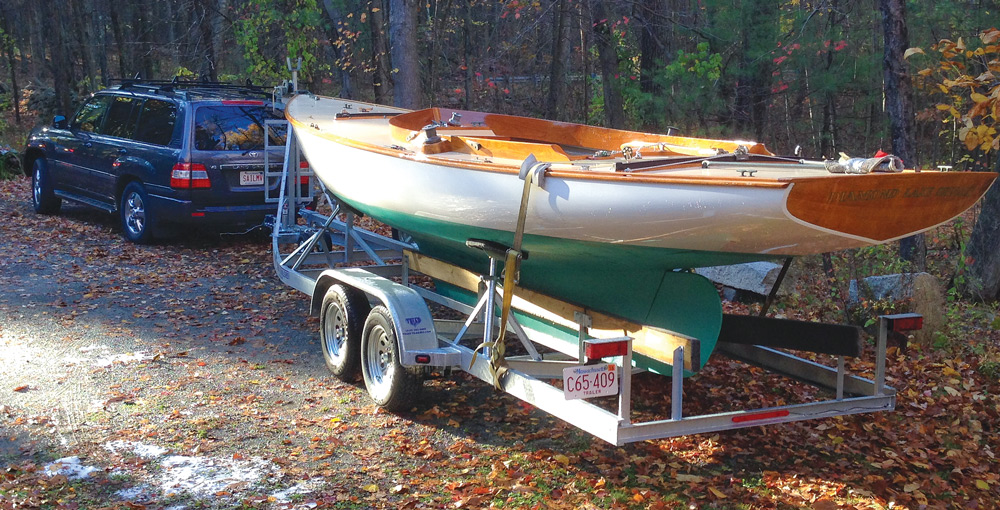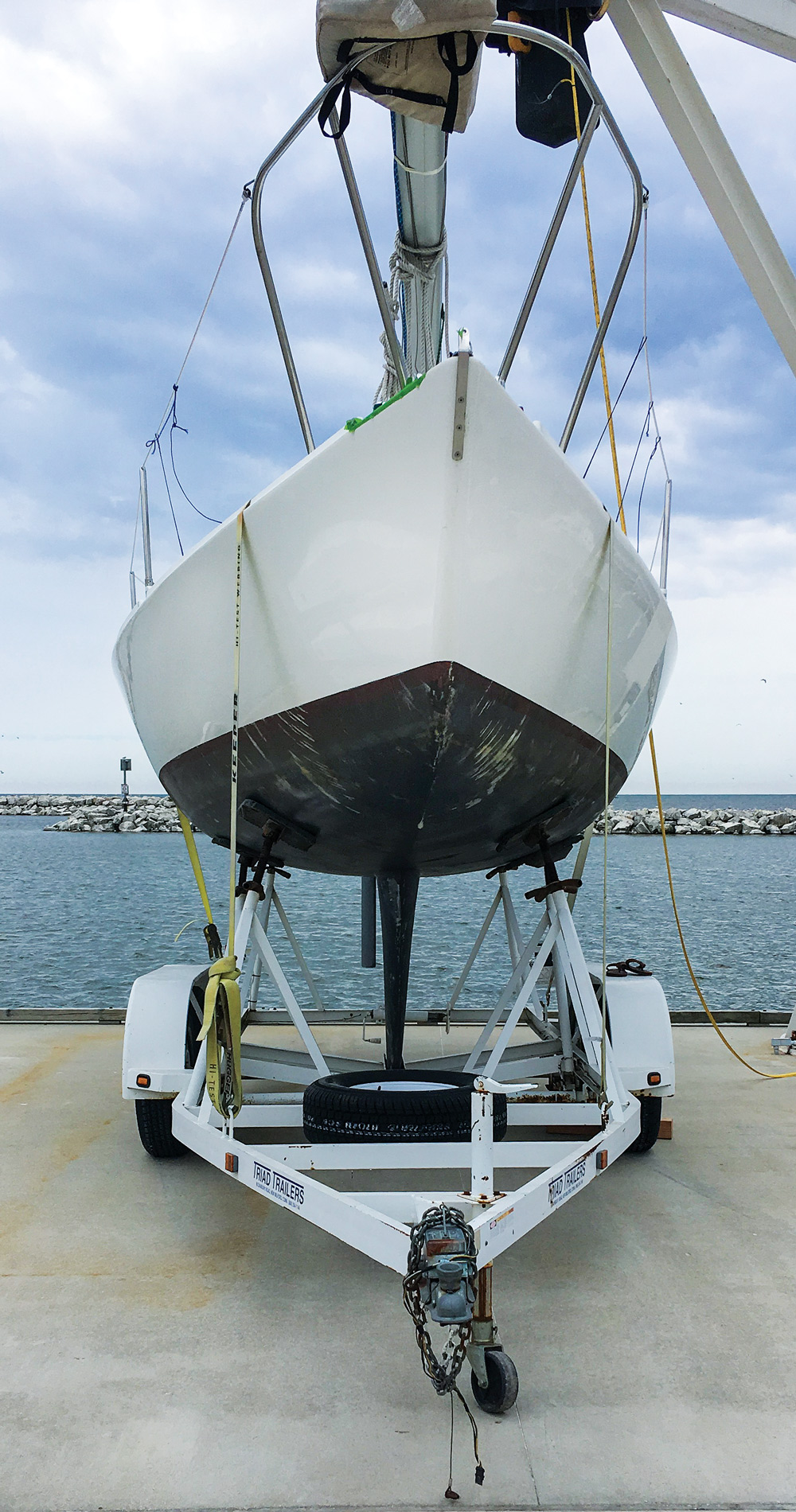Trailering tips
With a trailerable boat the next adventure is just a highway away, but you have to get there first
There’s a freedom that comes with trailerable boats, whether dinghies, small keelboats or powerboats. Your next adventure is just a highway away. But first you have to get there. But that’s not too hard, right? All you have to do is hook it up, check the lights, hit the road and avoid at all costs having to back up. There’s a little more to it than that, but it’s nothing you can’t handle with a little due diligence and a bit of practice.

The very first thing you need to know is whether or not you have the right equipment for the job. Towing components are typically very well marked, which makes it relatively easy to find out if what you’re working with is good enough to get you where you need to go.
First, know the weight of what you’re planning to pull. This means you need to know the approximate weight of the trailer, boat and everything in it. Make sure you remember to take into consideration full tanks of gas and water or any miscellaneous equipment you may stow inside the boat. With that information in your back pocket, check your vehicle’s manual to be sure it falls within the range of its towing capacity.
Next up, you need to select the right trailer hitch. Look at the ball socket at the very front of the trailer. There will be a marking somewhere on it (that has most likely been worn away to the point where it is extremely difficult to read) that indicates the size ball you need. In the vast majority of cases, it will say 1-7/8”, 2” or 2-5/16”. While these may seem like small differences in size, you should never tow a trailer with the incorrect ball size. For one thing, the sizes generally correspond with the weight capacity of the ball, though there are several other components on the receiver the ball is attached to that play an important role. If the ball is a size smaller than the ball socket, you risk an insecure hook-up that could lead to the trailer popping off of the ball while underway.
Once you have the right size vehicle and ball, you need to make sure the receiver has the right drop or rise. The goal is to make sure the trailer is level once hooked up to your vehicle. Hook the trailer up, step back 50 feet and see if the whole thing looks level. Don’t trust your eyes? Grab your trusty phone, download a level app (or go into your garage and grab an old-school level) and place it on the tongue of your trailer. As soon as you’re satisfied that the trailer is level, you can go ahead and finish the process of hooking the trailer up. Make sure to crisscross the safety chains on the trailer when you hook them up to the vehicle (and be sure they don’t drag on the ground). This will provide an extra level of safety in case the trailer pops off the ball, as it should land on the crossed chains to give you time to stop before disaster strikes.

Now you’re ready to hook the lights up. Make sure both connections are dry, and if you’re driving a larger truck or SUV you may need to purchase an adapter for your trailer. Once hooked up, grab a friend and have them watch as you hit the hazards and brakes. This step is important: If your trailer is fully loaded and your lights are not working, the traffic behind you will never know if you are slowing down or changing lanes.
Before you walk away from the coupler, double check that the coupler latch is all the way down. Do yourself a favor and go to the local hardware store and pick up a safety pin to put through the hole in the latch. Not only will this save you from scrambling for a spare pin or bolt before you leave town, but you can also feed the wires from the lights connection through it to keep them from dragging on the ground.
On the road
There are few things to keep in mind when loading your boat and trailer. Firstly, if it can move, flap, vibrate, open or close, it probably will. Put a bungee across any doors or cabinets to keep them closed, tie down any hatches and stow anything that could fly away. If you have a cover on your boat, make sure it is designed to be on the boat while being trailered. Often, covers made for being on a trailer with the mast up or while at the dock fit more loosely than a trailer cover, which means they’ll flap themselves to pieces in the wind regardless of how well they are tied down. Second, a trailer rides best when the tongue weight is around 10% to 15% of the weight of the entire trailer. Too much tongue weight means the suspension of your vehicle will be under stress and too little means the trailer will sway from side to side on the highway. If you notice swaying, pull over and rearrange gear in the boat to be in front of the axle of the trailer.
Even though you would never leave town without tightening the ratchet straps on your boat, they have an irritating tendency to loosen once you hit the road. It’s generally a good idea to pull over after a half hour on the highway to do a quick check of the straps along with each time you stop for gas, bathrooms, food, candy, sightseeing or argument-settling
You should also check for heat on the wheel bearings of your (properly inflated) trailer tires. Use the back of your hand to feel that the wheel bearings are not getting excessively hot, or that one is not significantly warmer than the other.
Put it in drive
There are a few quick tips to driving with trailers that will make your life easier if you keep them in mind. Take turns wider than you think. If there are two lanes available to you, don’t be afraid to use them. Pull past your turn a little bit; this will keep you away from the curb and the people, dogs and mailboxes on it. Know the height of your trailer and the highest part of the boat that’s on it. This includes stacked dinghies, anchor lights, radar domes and antennas, all of which are prime targets for an overpass or a tree branch to knock off.
Be aware that the heavier the trailer, the longer it will take you to slow down. Use caution in busy merging lanes of traffic and assume that the cars around you do not realize how heavy your trailer is. Grab a friend when you’re backing up and have some hand signals that you agree on so they can be your second set of eyes, but make sure they don’t stand in your blind spot. If you are backing up and the trailer is turned so sharp that it is at a less than 90-degree angle, stop, pull forward and start again. When in doubt and when learning, do everything in reverse as slowly as you can.
There is no such thing as too much attention to detail when it comes to prepping your trailer and yourself for a trip. If you have everything packed up and secure, you will be a calm driver and your passengers and the cars around you will be safer. Even better, you’ll look like a rockstar when you show up at the launch ramp or crane.
Whitney Kent, who has driven 25,000 miles trailering boats around the country, is the program director at Sheboygan Youth Sailing Club in Wisconsin.

Comments